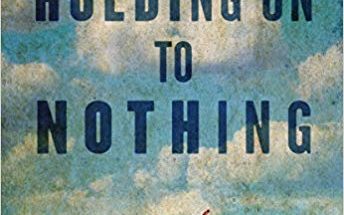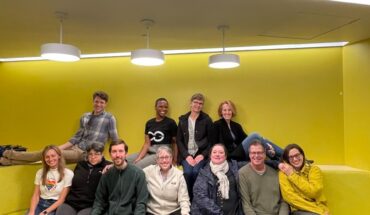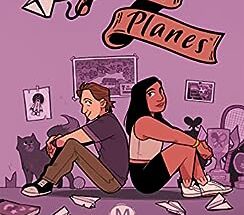 It’s hard to believe A Bend in the Stars (Grand Central, 2019) is Rachel Barenbaum’s debut. This beautifully written literary novel is many things—a historical thriller about physics, a gritty look at the plight of Russian Jews in 1914 Russia, a complicated love triangle, a heart-pumping journey across Russia, and a sweeping family saga. No matter what type of novel you like, you’ll find it all here. I loved it.
It’s hard to believe A Bend in the Stars (Grand Central, 2019) is Rachel Barenbaum’s debut. This beautifully written literary novel is many things—a historical thriller about physics, a gritty look at the plight of Russian Jews in 1914 Russia, a complicated love triangle, a heart-pumping journey across Russia, and a sweeping family saga. No matter what type of novel you like, you’ll find it all here. I loved it.
Most World War I books focus on England, France or Germany; this book offers a refreshing new take. Although the story takes place on the eve of war, it’s ultimately not a book about war. It’s really about two headstrong siblings driven by their individual passions, and the power of ideas to change the world. Will single-minded scientist Vanya Abramov make it to the eclipse in time to prove or disprove Einstein’s as yet unpublished theory of relativity? Will his sister Miri, a headstrong female doctor, leave her steadfast fiancée for a dashing deserter of the Czar’s army? Will the Abramov family line die out in Russia or will they rebuild a new one in America?
Publishers Weekly says A Bend in the Stars is “a rousing debut…Fans of Kristin Hannah will enjoy Barenbaum’s exhilarating tale.” Madeline Miller, #1 New York Times Bestselling author of Circe, calls the novel “a sweeping epic that transports the reader into another era.” Rebecca Makkai, author of the Great Believers, says it’s “a vivid and wrenching debut, full not only with the darkness of history but also with hope—a literary saga for fans of The Invisible Bridge and All the Light We Cannot See. Love and war and Relativity weave together seamlessly, and we’re left understanding that there’s more than one way for the universe to bend.”
A Bend in the Stars—a summer 2019 B&N Discover New Writers selection—comes out today. Be the first in your book group to get it. And if you don’t have a book group, join one now. And get ready for a roller coaster of a ride!
Barenbaum is a devoted member of the Grub Street family, and a graduate of our Novel Incubator, so it is with pride and joy that we at Dead Darlings bring her insights to you today.
So, let’s start at the beginning. What was it that first sparked you to write this story?
In 2014 I was reading Scientific American’s monthly installment of “50, 100 and 150 Years Ago” and learned that in 1914 an eclipse fell over Russia that could have proved Einstein’s theory of relativity, but because of war and bad weather no scientists were able to mount an expedition and record the event. Even more, the brief noted, it was a good thing because in 1914 Einstein’s equations were incorrect and a photograph of the eclipse taken then would have likely discredited him. Before I even put the magazine down I knew it was a book idea: What if someone did make it to the eclipse, and did manage to take a photograph? Could he have taken Einstein’s place in history? I was already a bit obsessed with Russian history and knew it was one of the country’s most fascinating and tumultuous times. And I knew that Einstein wasn’t working in a vacuum, that there were other scientists working to help him—and beat him. Could I bring that race to life?
This heart-pounding adventure is filled with romance, history and science…which part was most fun for you to write. Which was the hardest?
A Bend in The Stars is set in the turn of the twentieth century. This is one of my favorite historical periods because I would argue it was the last time ideas were more powerful than fear, when a rash of optimism and faith in our ability to change the world led to inventions, art and ideas that truly altered history. There was an energy and optimism that hasn’t existed since. Writing about the power of ideas, showing that people were motivated by ideas was by far the hardest part of writing this novel—convincing the reader that ideas can motivate people to risk their lives.
This book covers a lot of ground. How much time did you spend doing research versus writing and editing?
As I mentioned, I love this time period and read dozens and dozens of books about Czarist Russia, science and philosophy around the 1900s and the life of Jews living in Russia long before I sat down to write Bend. In addition, growing up around my grandparents and great aunts gave me a sense of some of the nuances I wanted to add, like the split in the Jewish community between those who wanted to assimilate and those who didn’t and the constant fear of the czar’s men.
But all of that only gave me a base, a general feeling I could incorporate into the novel. To truly write scenes, I need to see them in my head, and so the bulk of my research specific to this book involved finding photographs and that took a few months. The best trove I found was in an old National Geographic I purchased on eBay, published in 1914 right before the war started. The issue was devoted entirely to a survey of life in Russia and featured dozens of stunning photographs of Russians from all walks of life. Two things struck me in this truly spectacular photo essay: First, the faces of the citizens in the photos were so clear and so gorgeous I could imagine them as real people, living today. And that made the time period come alive. I could imagine what the teenager staring at me might have been thinking as she stood next to that boy, or the mother as she held her baby. Second, the vast size and diversity of the country. I was blown away by the largely uninhabited, untouched landscapes and just how separated groups of people across the empire were by those expanses. To me, it was gorgeous and terrifying and something I wanted to be sure to capture in this book.
All that is to say, I spent decades learning about this time period, and in comparison, only a few years writing and editing, but in the end there is no real hard line between the two—is there?
So, what was the most interesting thing you learned about physics, Russia…or anything you researched?
Today many people talk about the internet as the single invention that has changed our lives, and it has, but I’d argue it’s changed our lives by encouraging seclusion—enabling people to stare at a screen, alone, for hours on end while the inventions in the early twentieth century encouraged inclusion. People could suddenly travel freely to meet and find other people, to work and collaborate. Telephones, radios, newspapers shared ideas widely. All of these booming networks brought us together. And I like that—the romantic notion that science should bring humanity together. I wish we had more of that today. While writing this book, this was my biggest realization—how much I yearn for the collaboration of the past, for that yearning to physically be with people in order to share ideas and work towards progress together.
This is an epic, sweeping novel with many characters, in many locations, traveling across time. How did you keep track of all of it? What was your method?
Ha! I’m laughing because this was complicated. I kept a very detailed spreadsheet in Excel. It was the Jewish calendar superimposed over the Gregorian calendar, with everyday marked with exactly what Vanya and Miri were doing. I grew up with a calendar like this hanging on the refrigerator, Jewish over Gregorian, but for people who haven’t it’s a bit hard to explain how the two overlap. Complicating matters is the fact that Jewish holidays/days start and end at sundown—not midnight—so the timing of sunset is always listed and very important. All of this made counting down the days to the eclipse a sometimes difficult task.
The core of the narrative is a race to prove or disprove Einstein’s theory of relativity by being the first to conduct an experiment during a rare total solar eclipse on the eve of World War I. How much of this story is based on fact? How much did you have to make up to fit your plot?
People ask this a lot. They always want to know what’s ‘real.’ To this, I reply: History is told by a narrator who chooses what to include and what to exclude. Was there a group of scientists/ physicists and mathematicians racing to Russia to photograph the total solar eclipse in 1914? Yes. Was there also a group racing to correct Einstein’s math? Yes. Were the characters in my book a part of this group? No. The characters are entirely made up. They are figments of my imagination but would I be surprised to find there was a scientist like Vanya or a surgeon like Miri who actually existed? No.
This goes to the second part of your question: How much did I make up to fit my plot? The setting, the circumstances, the history are all ‘real.’ I peered into a small slice of the past and dropped my imaginary characters into that setting. I invented their desires, their fears and dreams but everything they encountered was something that could have happened to a ‘real’ person living at that time. I wanted to drop Miri and Vanya into a world that actually existed because that world, to me, is fascinating, and as they say, ‘I can’t make this stuff up.’
The story is fast-paced thriller, but it’s stitched together with the threads of strong family bonds, religious traditions and unspoken secrets. How much of your own family history and traditions are woven into this fictional family saga?
Only Baba is based loosely on someone I knew—my great aunt. Actually, when I first sat down to write this book I thought she would be the main character. I wrote about 200 pages before I realized she wasn’t the focus— that Miri and Vanya, invented characters, were the center of the story. From that new perspective the story gained more energy and a faster pace. I found that being tied to a real person was too heavy. It kept me worried about what was ‘right,’ whereas once I let go of that I could take Miri, her brother, and all the others on far more exciting adventures.
About Rachel Barenbaum: Rachel is the author of A BEND IN THE STARS, (Grand Central 2019). She is a graduate of GrubStreet’s Novel Incubator program. In a former life she was a hedge fund manager and a spin instructor. She has degrees from Harvard in business, and literature and philosophy. She lives in Hanover, New Hampshire, with her husband, three children, and dog named Zishe—after the folk hero who inspires many tales around their dinner table.




2 comments